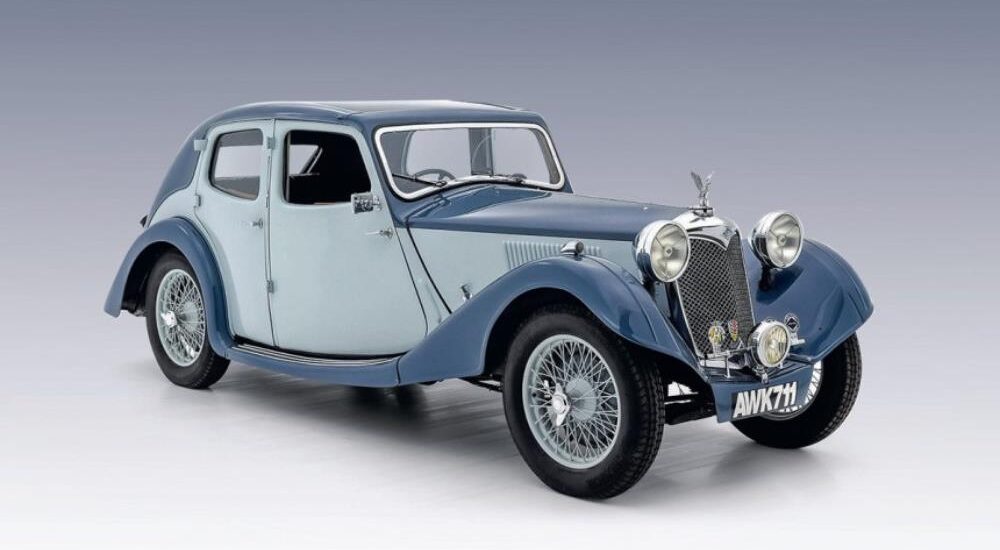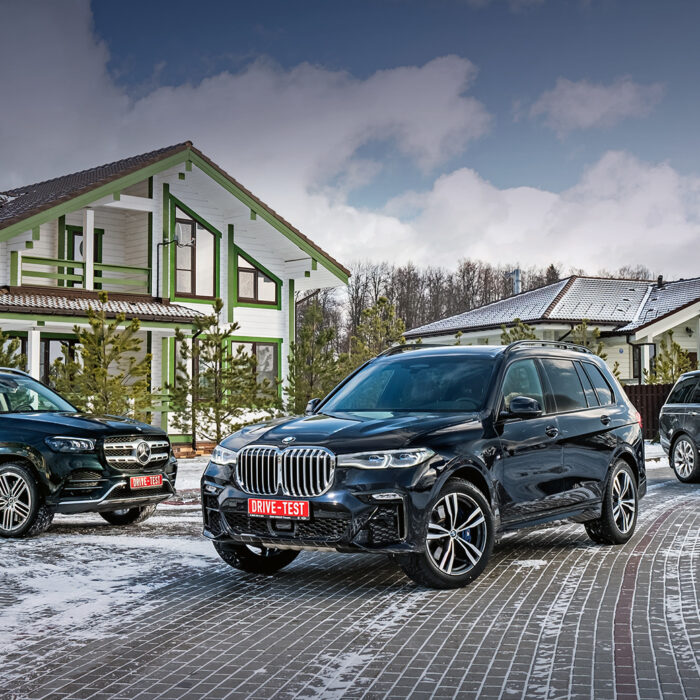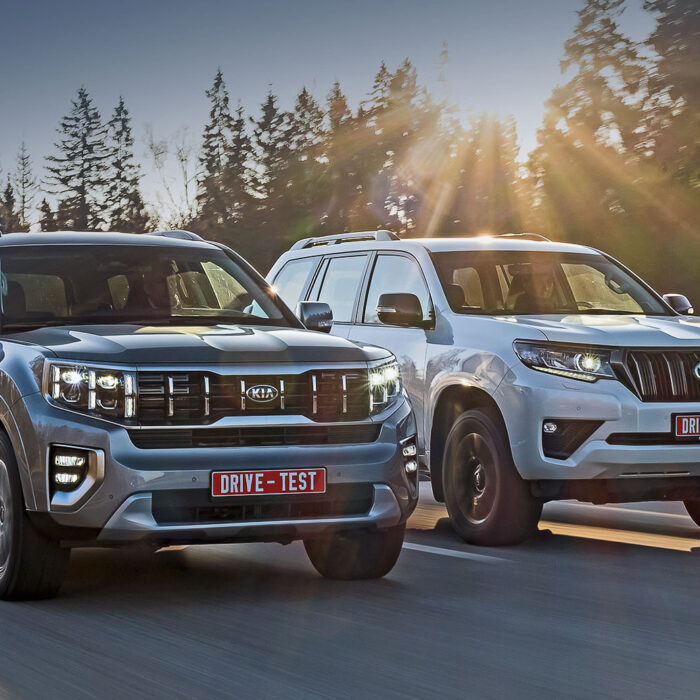“If our Kestrel could talk, it would boast, ‘I am always on time!'” Such could have been the advertising slogan for this quintessentially English model if it had been marketed today. However, during its time of manufacture, there was no suitable market in our region.
This slice of British ornithology is embodied in the vehicle’s name: while a “tit” translates directly to “tit,” and a “siskin” remains “siskin,” a “kestrel” is known as “pustelga” in our language—a predatory, swift, and sharp-eyed bird, akin to a falcon, feared by sparrows and voles alike. The English automaker Riley likely considered this an apt name for a swift car when they introduced this 1.5-liter enclosed model. Their roster already boasted vehicles with evocative names such as Brooklands, named after the famous racetrack; Stelvio, after the Alpine pass with clear sporty connotations; and even Ascot, referencing the prestigious racecourse patronized by the British crown. These models were either open tourers or sporty two-door saloons. The new addition was a four-door model expanding their 1.5-liter line, aptly named after the bird.
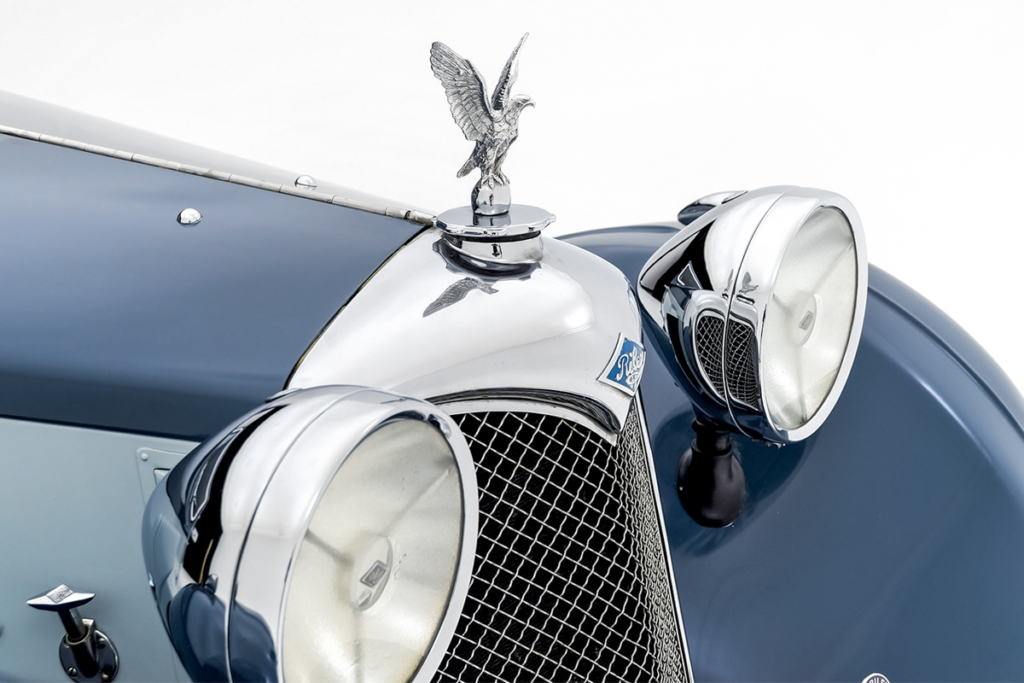
The bonnet ornament depicts a kestrel taking off. The cutout in the front fascia is covered with a safety net.
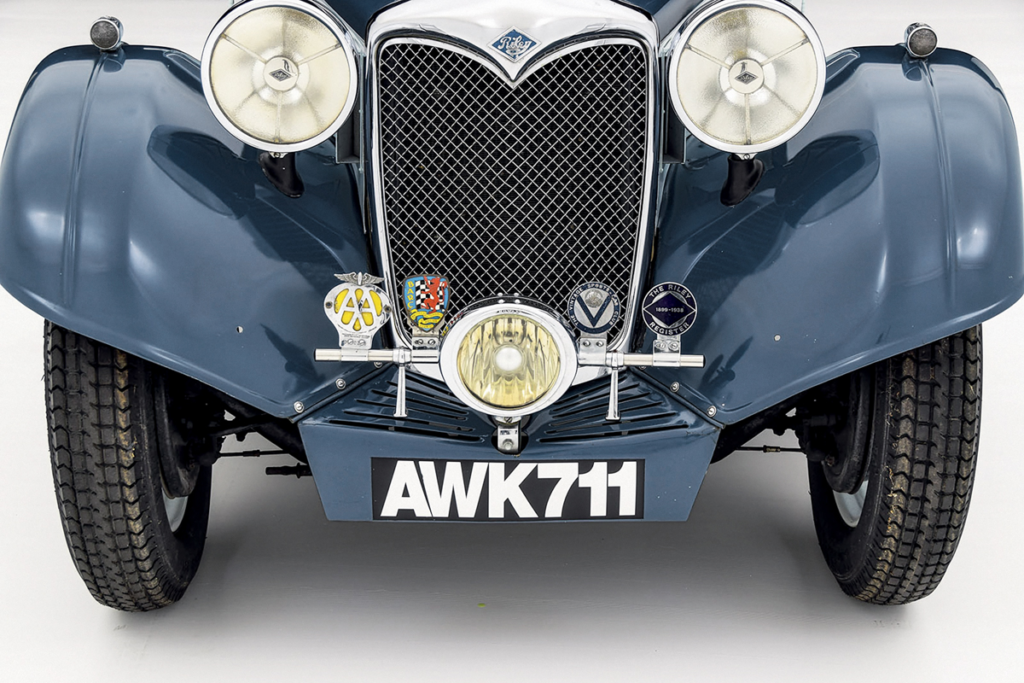
A very conservative frontal solution. The headlights here are Rotax, and the fog light at the very bottom, on the contrary, is Notek. There is no front bumper at all
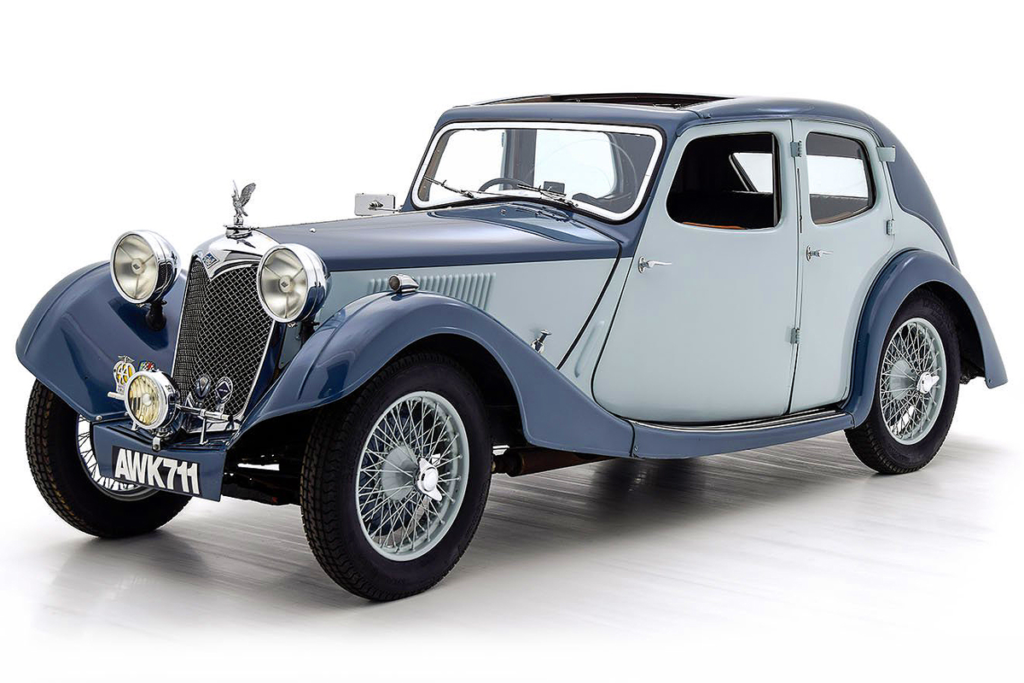
The mid-thirties “aerostyle” in its British version: a sloping top and smooth sides, but fenders and running boards protruding beyond the main volume of the body. The gray color of the body also evokes certain ornithological associations, although in terms of coloring, a real kestrel is not at all like that – it is mottled with a tint of red
The Riley brand originally graced bicycles; the first motorized vehicles under this brand emerged in 1898, powered by French De Dion Bouton engines—a common occurrence at the time, as many vehicles throughout the Old World utilized such engines. By 1903, however, the company had started producing its own engines, moving away from reliance on external suppliers.
Riley’s Coventry factory was particularly famed for its spoked wheels, a craft perfected during its bicycle-making days and highly sought after in the automotive era by giants such as Mercedes, Panhard, and Hispano-Suiza. Even Rolls-Royce, known for “the best cars in the world,” outfitted its vehicles with Riley’s wheels. The production of thick wire-spoked wheels became so dominant that it had to be segregated into a separate business, unrelated to direct car manufacturing, to prevent it from overshadowing the firm’s automotive endeavors.
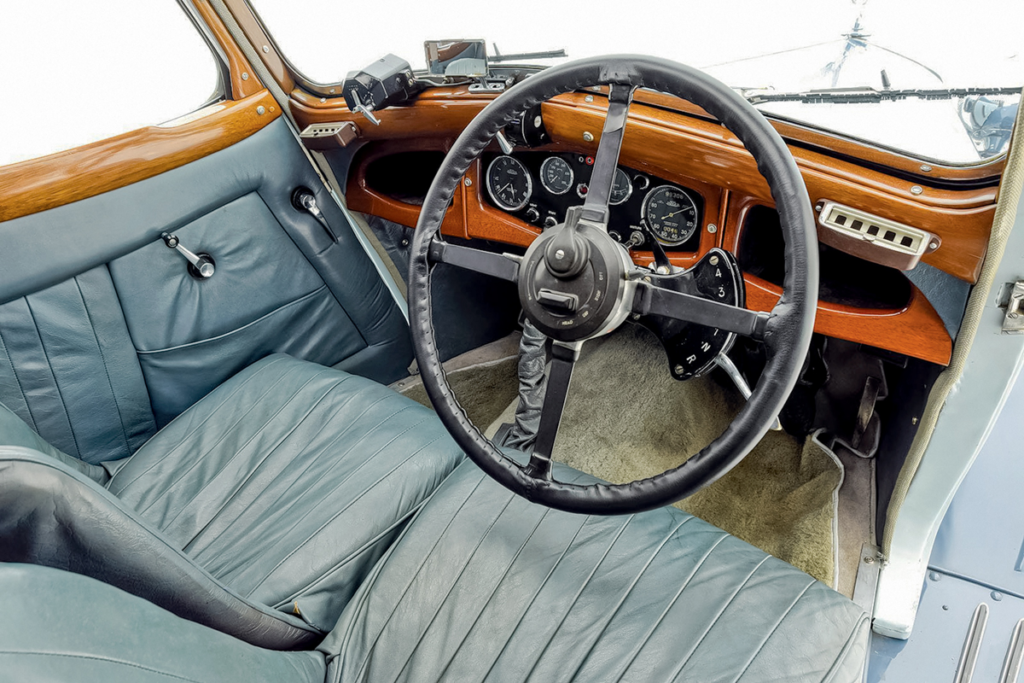
View of the driver’s workplace. The black sector just below the steering wheel is the transmission selector
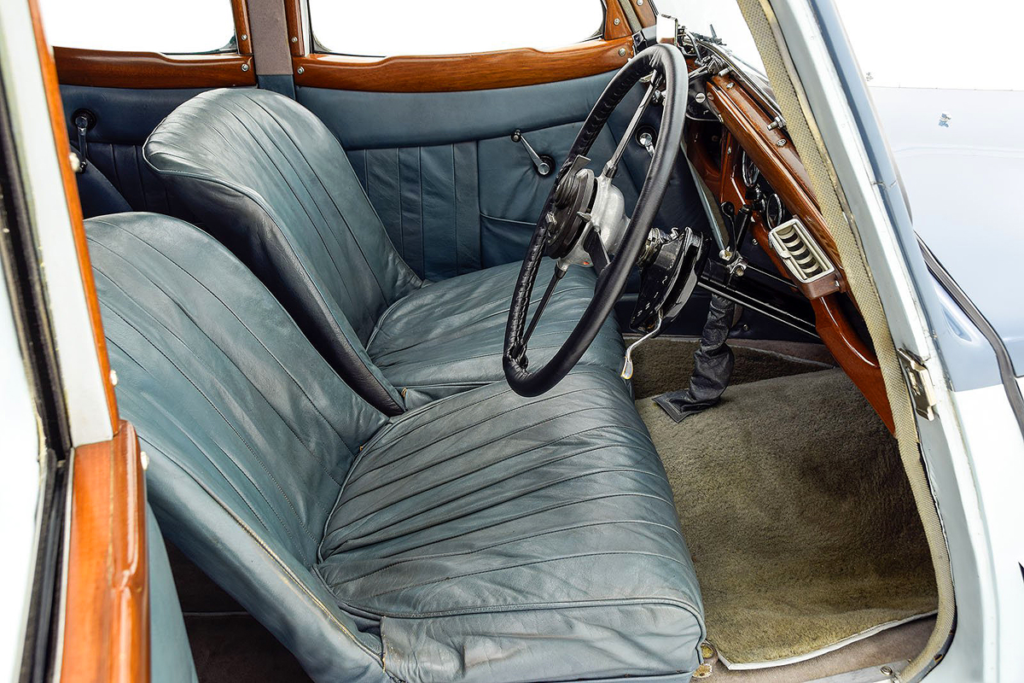
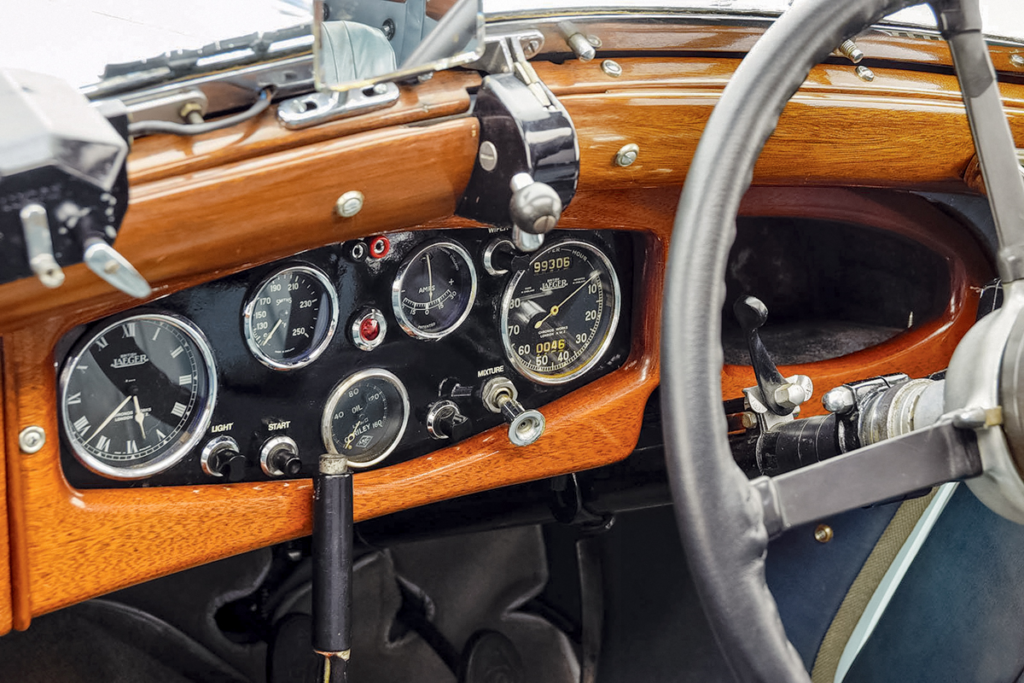
The scales on the instrument panel are somewhat motley: there are Jaegers and Smiths, and it is not clear whose ammeter it is. The only original dial, apparently, is the oil temperature indicator in the middle down: it has the Riley brand in white on black
Riley’s cars were quite commendable; at one point, even Walter Owen Bentley counted himself among its satisfied customers with his nine-horsepower model. The four-cylinder 1458 cc engine was based on a 1926 design that featured advanced technologies for its era: inclined overhead valves, hemispherical combustion chambers, and dual camshafts driven by gears.
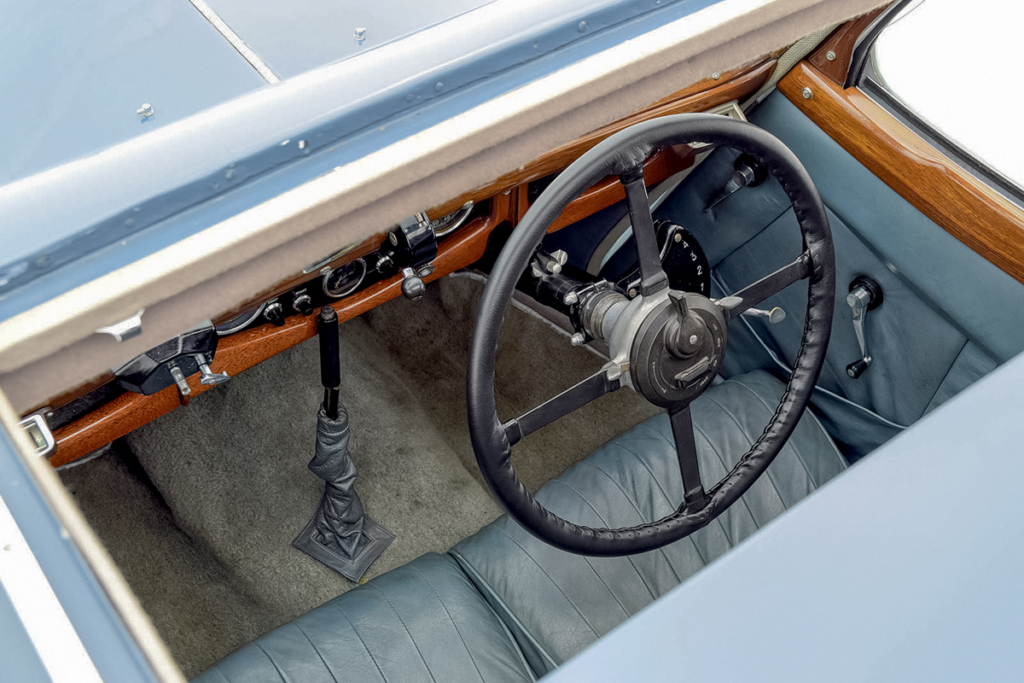
The roof has a sliding hatch
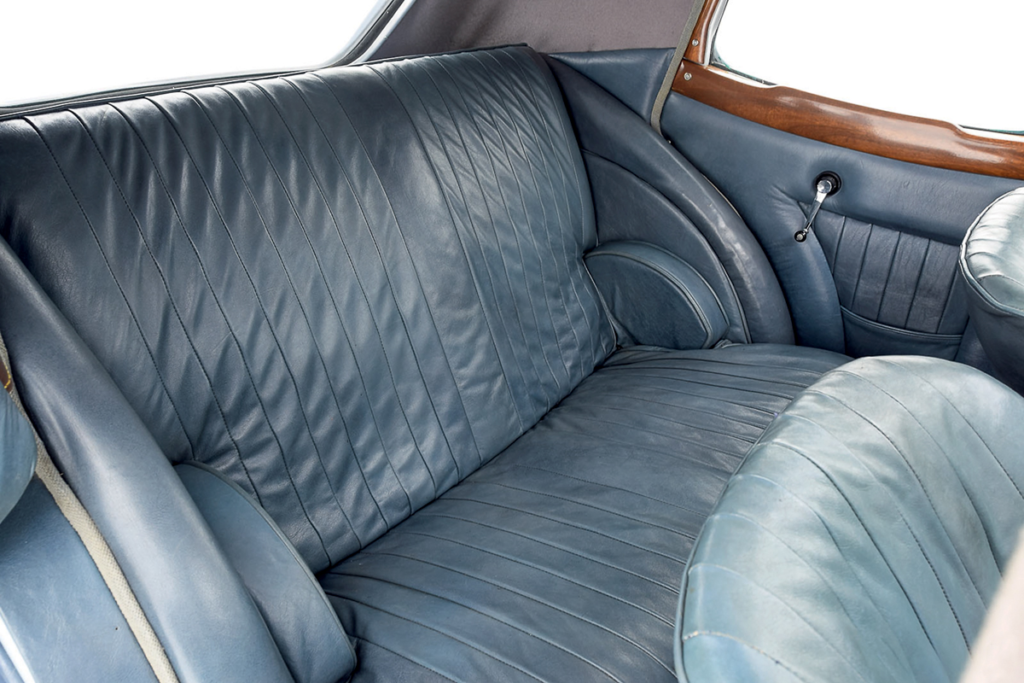
Comfortable rear sofa for two people. What is characteristic, no ashtrays or cigarette lighters. But the edging around the windows is made of natural wood, as is the front panel
After a redesign in 1935, this engine’s output was increased to fifty horsepower (and in some versions, fifty-five) and continued to power Riley vehicles until 1957, even after several enhancements. The example shown in our illustrations features a pre-selector transmission from external supplier Armstrong-Siddeley. Another noteworthy feature was the centralized Bijur lubrication system.
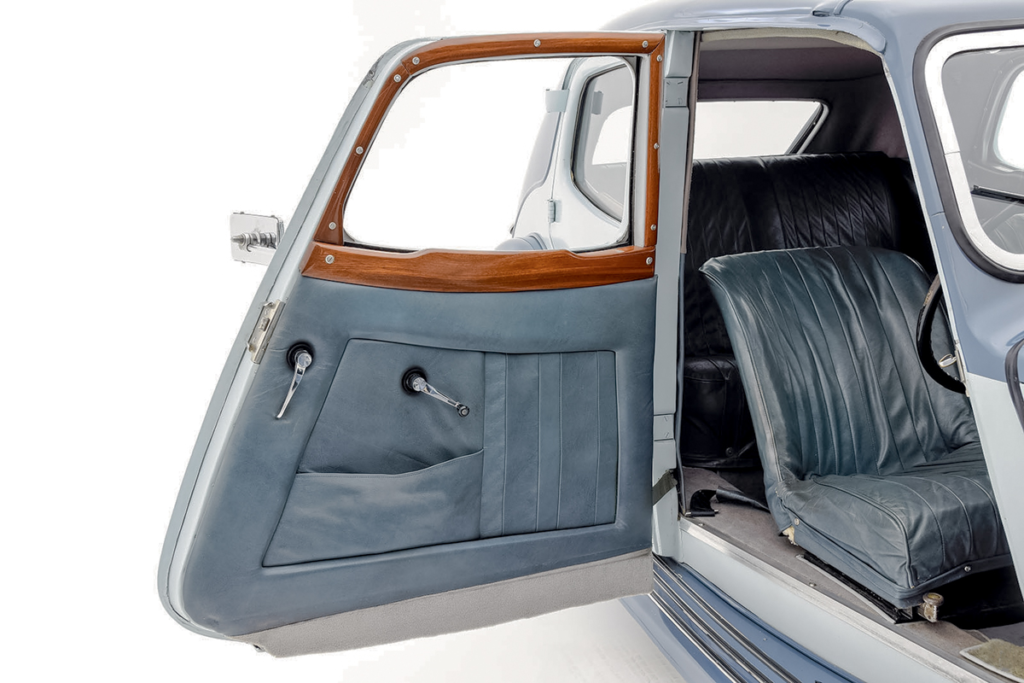
The four-cylinder overhead valve engine develops about 50 hp. The fuel system is two S.U. carburetors; the company that manufactured them also became part of the Nuffield Organization
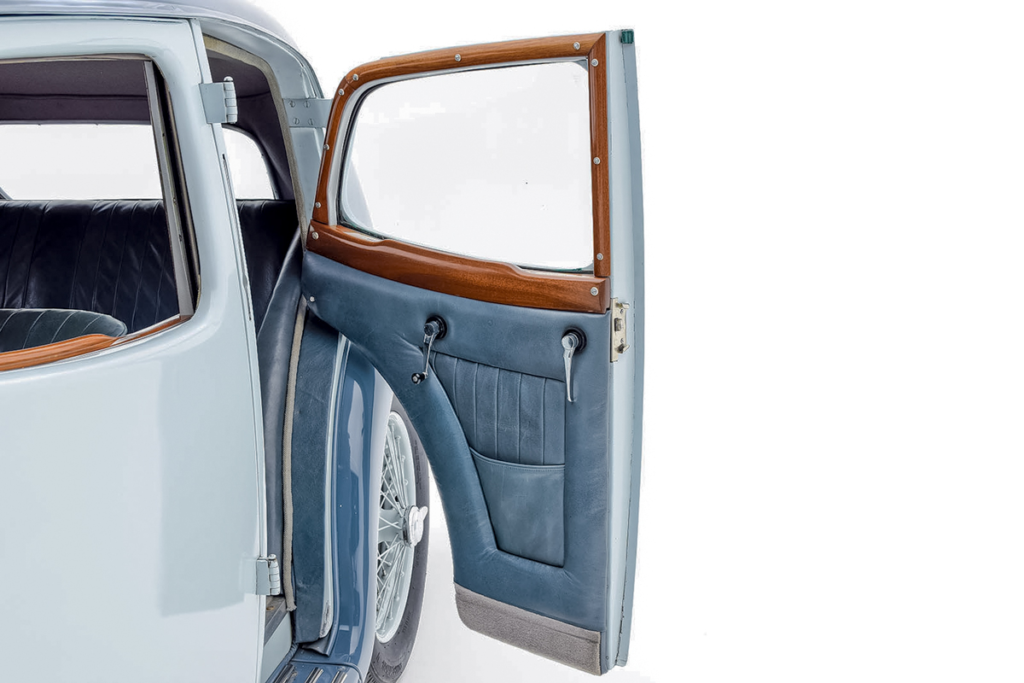
Merely three years after this particular vehicle left the factory gates, Riley became part of the newly formed Nuffield Organization, alongside such brands as Morris, Wolseley, and MG. Post-World War II, in 1948, it merged into the newly named British Motor Corporation Ltd., along with Austin.
Initially, the different brands within the conglomerate maintained some degree of design independence. However, over time, in the spirit of “production rationalization” to reduce costs, their vehicles became largely standardized, differing mainly in radiator grille designs and interior trim levels. The Riley brand was phased out in 1969 due to its dwindling market share, which had fallen to 1% and showed a continuing downward trend. At the time, it offered three models, including the four-cylinder, four-door Kestrel 1300 Mk.II—a modest and unremarkable car.
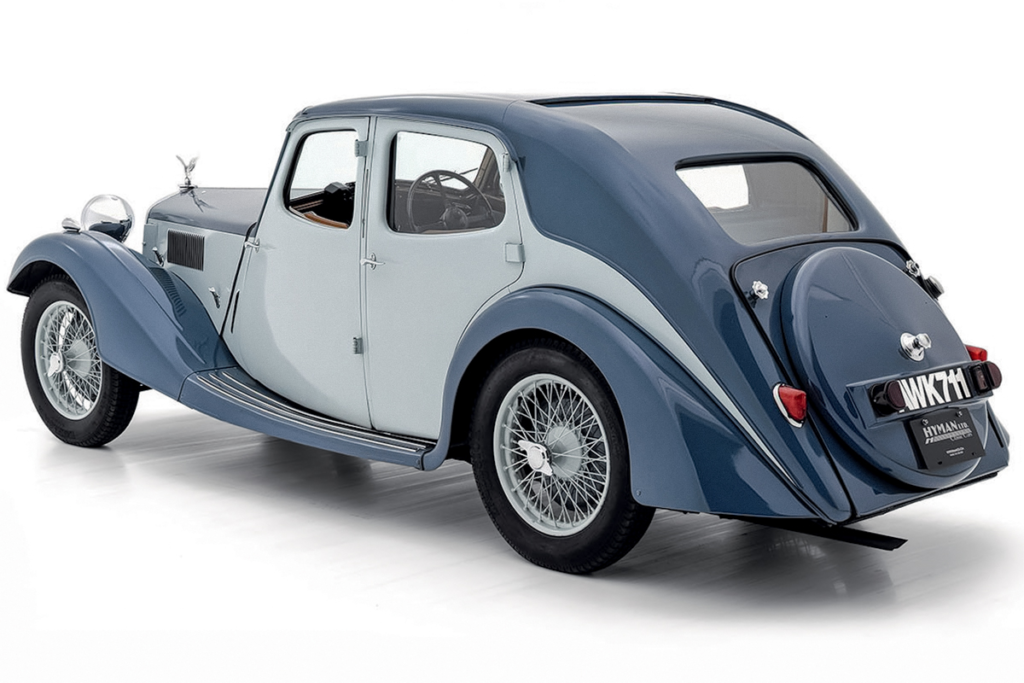
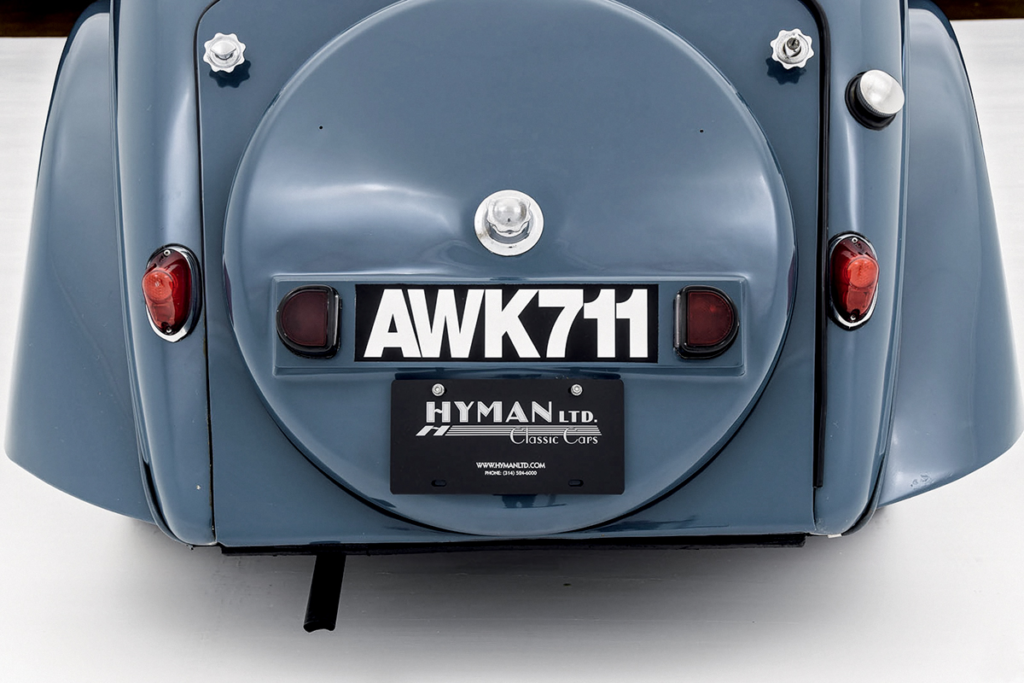
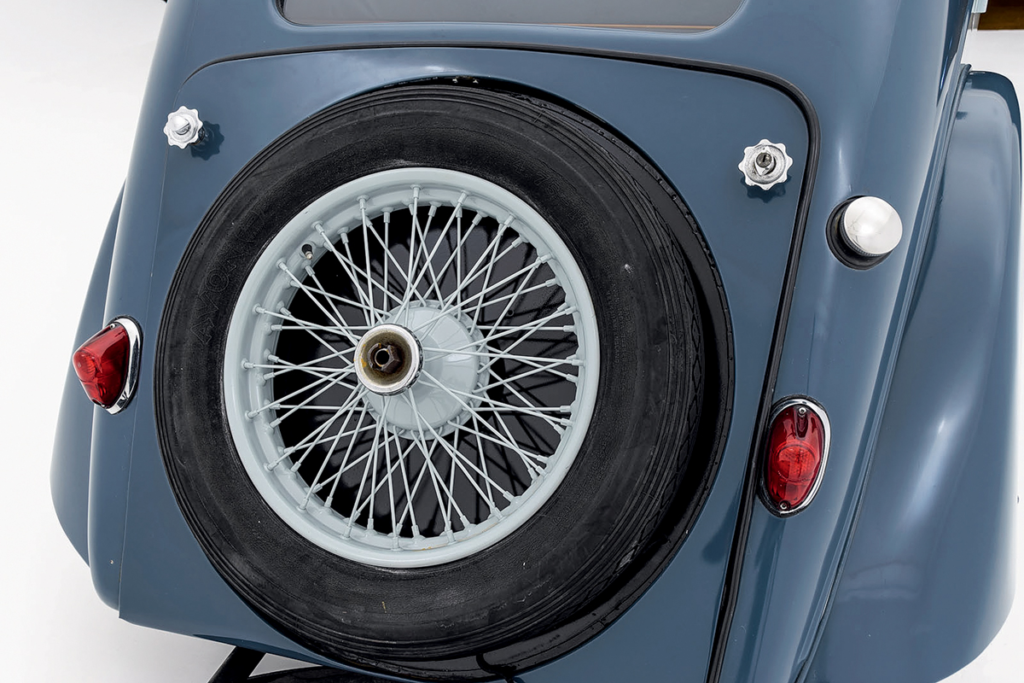
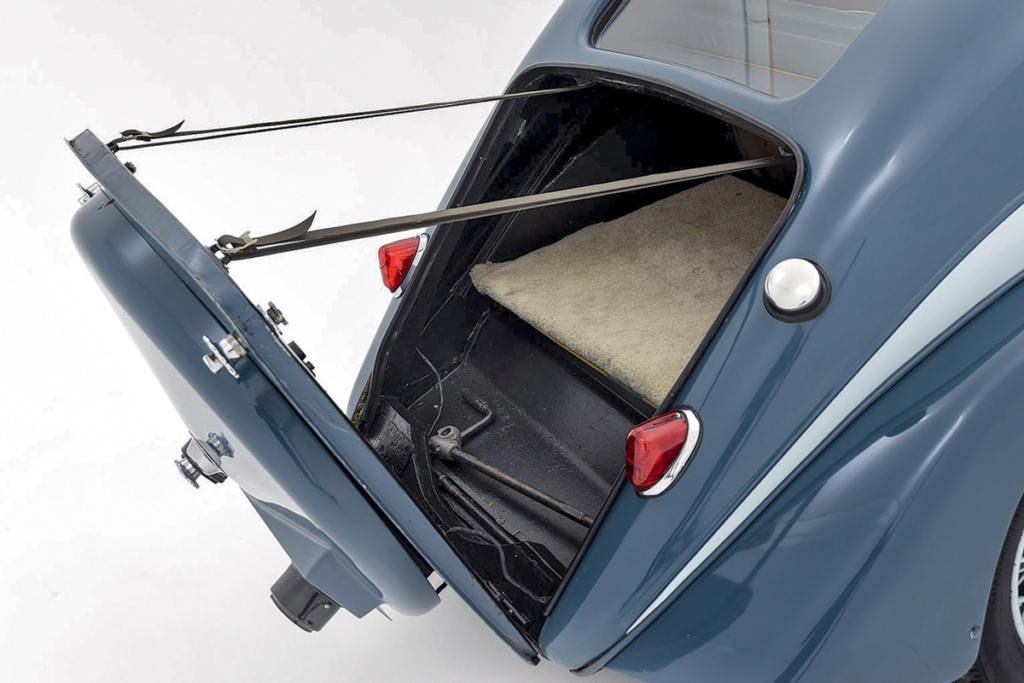
The spare wheel is located on the trunk lid and covered from above by another, its own, lid. The trunk opens (or rather, opens slightly) downwards. The rear bumper is also missing
Photo: Sean Dagen, Hyman Ltd.
This is a translation. You can read the original article here: Riley Kestrel Saloon 1935 года в рассказе Андрея Хрисанфова

Published February 13, 2025 • 4m to read

